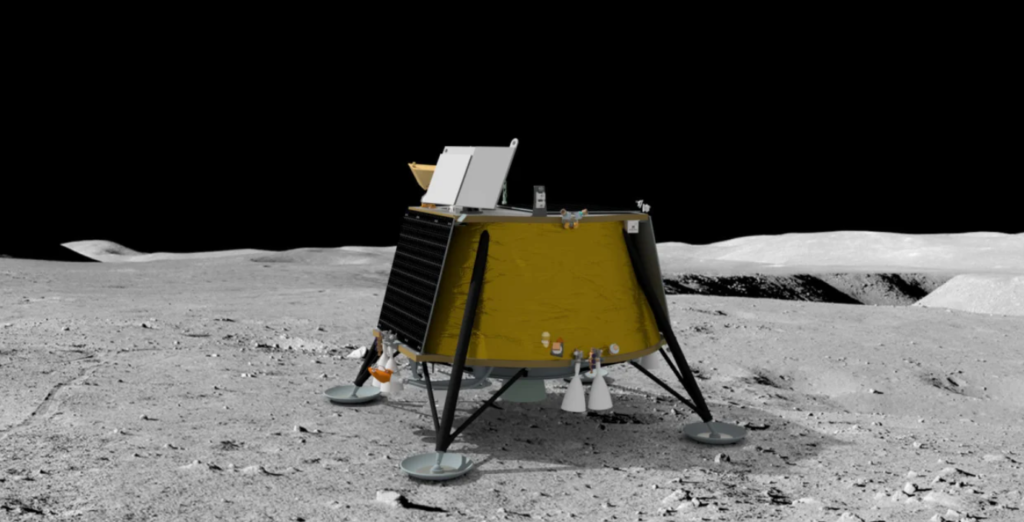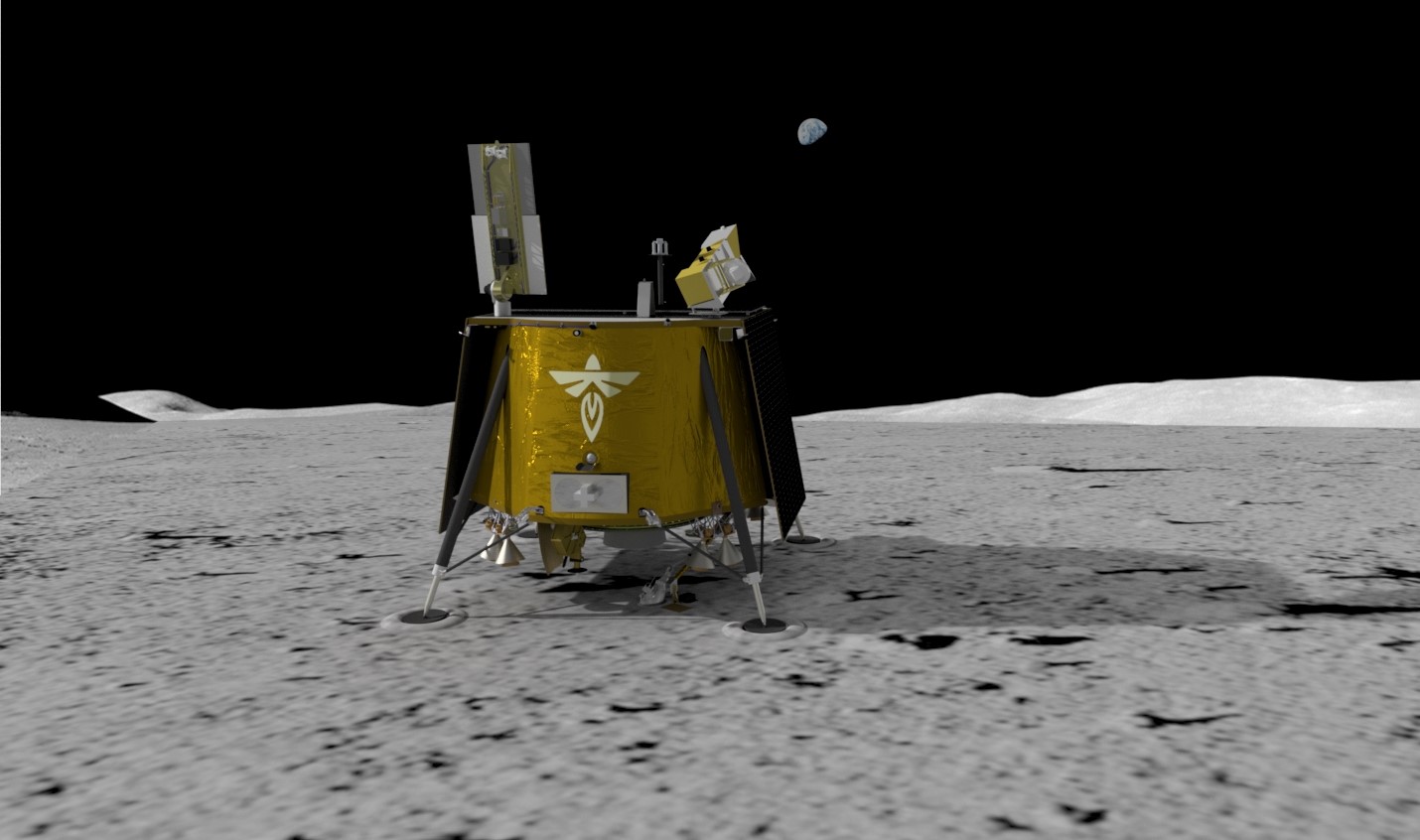
Firefly Is Making Progress On Its Blue Ghost Lunar Lander
Firefly Aerospace like many other companies within the space industry is working on more than just one project. After a partially successful first orbital test flight with Alpha not long ago, the company is close to a second test flight. Not only this, but Firefly has also been making significant progress on Blue Ghost, an innovative lunar lander meant to provide services for NASA and other customers.
Very recently, Firefly provided updates regarding the lunar lander program and what to expect in the near future. Specifically, they just completed the Integration Readiness Review of Blue Ghost M1, showcasing Firefly’s ability to drive program readiness under an aggressive schedule. This is promising news and is helping work towards an even more ambitious launch date not long from now.
The first Blue Ghost mission was awarded by NASA as part of the Commercial Lunar Payload Services (CLPS) program and will deliver a suite of 10 NASA-sponsored payloads, as well as other commercial payloads, to the lunar surface in 2023. However, the company has even more plans after this initial mission. Here I will go more in-depth into the recent news and what to expect in the coming months.
Blue Ghost Update

For a while now Firefly Aerospace has been working on Blue Ghost and future missions to the Moon. Now in late April, the company is making significant progress towards this goal. Two days ago on April 27th, Firefly tweeted saying, “Lunar News! Firefly has completed the Integration Readiness Review (IRR) of Blue Ghost M1. Special thanks to @NASA for participating, our teammates at ASI by Rocket Lab, and all the Firefly employees who made IRR a success.” Specifically, the day prior on April 26th, Firefly officially completed the IRR for Blue Ghost, which they point out showcases their ability to drive program readiness under an aggressive schedule. During the review, held recently at Firefly’s headquarters in Cedar Park, TX, the team marked key progress milestones across multiple areas, including: Structures, Fluids, Propulsion, Core Avionics, Battery Production, Harness Production, FlatSat progress, MGSE, EGSE, and Facilities readiness to support lander integration.
“Passing IRR indicates we have the necessary team, hardware, equipment, and documentation to support lander integration,” said Ray Allensworth, Blue Ghost Program Manager, who led the review process. This team continues to overcome obstacles and perform at the highest levels, helping us pave our path to landing on the Moon in 2024,” she continued. The completion of IRR comes less than six months after completing the Critical Design Review (CDR). “The short turnaround between our CDR in October and IRR is a testament to the soundness of the baseline lander design, forward planning by program, and the creativity of our engineers in overcoming supply chain and other challenges as they arise,” said Will Coogan, Blue Ghost Chief Engineer. They finished by giving a special thanks to NASA for participating, the teammates at ASI by Rocketlab, and all the Firefly employees who made IRR a success. The company’s next milestone will be the Lander Test Readiness Review which verifies readiness for primary system functional testing. In the coming months, they will be showcasing the payloads and the people making all of this come together.
In this update Firefly mentioned how satisfied they were with the short turnaround time between the CDR and now the IRR. This is referring to the completion of the Critical Design Review that was completed only months ago in October. On the 25th of October, Firefly tweeted saying, “We are one step closer to landing on the Moon! After successfully completing @NASA’s Critical Design Review (CDR), our Blue Ghost lunar lander is on schedule for a September 2023 landing in Mare Crisium. Congrats BG team!” The CDR paved the way for the construction of the Blue Ghost lander, which is scheduled to touch down in the Mare Crisium lunar basin in September of 2023 carrying ten NASA payloads as part of the $93.3-million Commercial Lunar Payload Services (CLPS) contract secured by Firefly earlier this year. The lander will also take several commercial payloads to the lunar surface. The 2023 Blue Ghost mission will be the first of what are expected to be yearly lunar surface missions for Firefly. “This milestone marks another step in an aggressive schedule and meeting it continues to showcase our spacecraft team’s ability to consistently deliver incredible work,” stated Dr. Tom Markusic, Firefly’s CEO. “This mission is a forerunner of what we see as a growing cadence of recurring data and payload service missions in cis-lunar space that will kickstart a lunar economy, and we’re honored to be demonstrating our ability to deliver these services for NASA and for our commercial customers.”
Moon Lunar Lander

Now that we know what progress Firefly Aerospace has been making on Blue Ghost, we can take a closer look at the lunar lander itself and the original contract with NASA. Specifically, early last year NASA awarded Firefly Aerospace approximately $93.3 million to deliver a suite of 10 science investigations and technology demonstrations to the Moon in 2023. The delivery, planned for Mare Crisium, a low-lying basin on the Moon’s near side, will investigate a variety of lunar surface conditions and resources. Such investigations will help prepare for human missions to the lunar surface. The award is part of the agency’s Commercial Lunar Payload Services (CLPS) initiative, in which NASA is securing the service of commercial partners to quickly land science and technology payloads on the lunar surface. The initiative is a key part of NASA’s Artemis program. Firefly Aerospace will be responsible for end-to-end delivery services, including payload integration, launch from Earth, landing on the Moon, and mission operations. This is the sixth award for lunar surface delivery under the CLPS initiative.
Back when the announcement was originally made, Thomas Zurbuchen, associate administrator for science at NASA Headquarters mentioned, “We’re excited another CLPS provider has won its first task order award. With this initiative, we seek to develop ways for new science and technology development utilizing a service-based model,”. “This allows U.S. vendors to not only demonstrate their ability to safely deliver payloads to our celestial neighbor, but also expand this capability for others who want to take advantage of this cutting edge approach to explore the Moon.” This is the first delivery awarded to Firefly Aerospace, which will provide the lunar delivery service using its Blue Ghost lander, which the company designed and developed at its Cedar Park facility. This facility also will house the integration of NASA and any non-NASA payloads, and also will serve as the company’s mission operations center for the 2023 delivery. “The payloads we’re sending as part of this delivery service span across multiple areas, from investigating the lunar soil and testing a sample capture technology, to giving us information about the Moon’s thermal properties and magnetic field,” said Chris Culbert, manager of the CLPS initiative at NASA’s Johnson Space Center in Houston.
In terms of the lander itself, it has a large list of unique features that help make it stand out as a viable option for different customers. For example, nearly any landing site on the near side of the Moon is achievable with Firefly’s lander, including the lunar poles. The baseline lunar capture orbit is near-polar, providing access to any surface location for nearly identical values. Communication back to the Mission Control Center (MCC) presently requires line of site to Earth, limiting transmission from polar regions to times when the Moon’s orbit about the Earth brings the relevant pole into view. However, the lander is designed to survive through communications blackout periods and to operate autonomously so long as the sun is shining. On-board processing and storage are used to operate payloads and store data gathered during blackouts so that they can be transmitted when communications become available again, (usually after 8–20 days). In addition, Firefly often points out that Blue Ghost is much more than just a transportation system. The lunar lander is very capable of supporting different payloads once on the surface of the Moon. This could be through power, telecommunications, thermal control, deployment, and more. Firefly Aerospace recognizes the importance of the Moon to the future plans of both the US government and commercial industry, and they are leading a number of efforts to develop a future lunar architecture supporting advanced lunar surface capabilities.
Conclusion
Firefly Aerospace is working on many different projects right now. This includes an upcoming second test flight with Alpha, Beta development, and even a lunar lander. Recently the company has provided additional updates regarding Blue Ghost. Specifically, the lander just completed its Integration Readiness Review and is moving on to the next steps. This is all in preparation for a mission to the Moon with NASA planned for 2023. We will have to wait and see how it progresses and the impact it has on the space industry.
